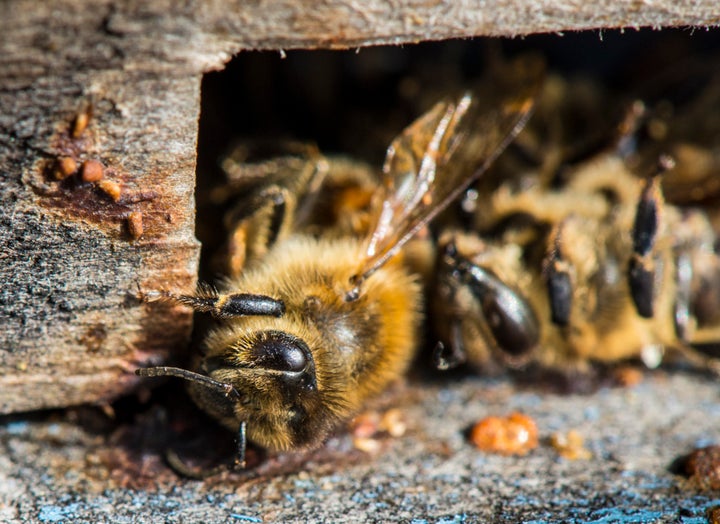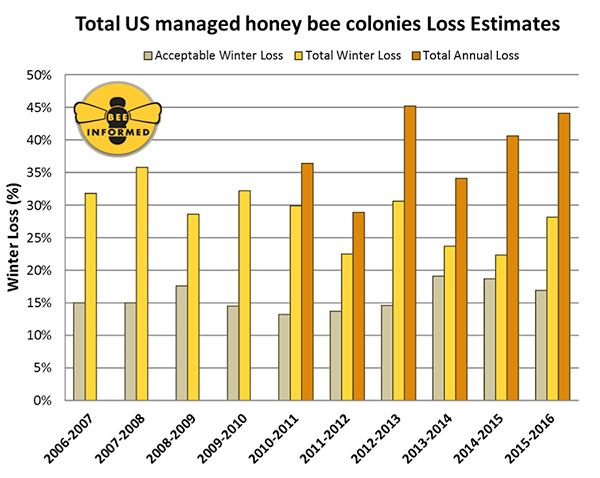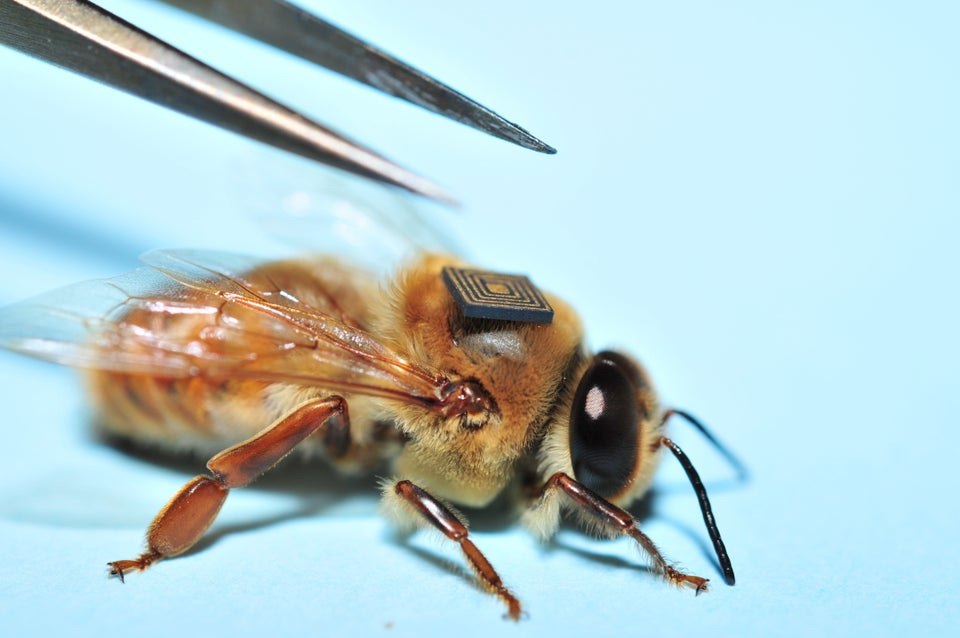Bees, the earth's most important pollinators, took another devastating hit last year, despite increased efforts to reverse the decline.
U.S beekeepers lost 44 percent of their total colonies from April 2015 to March 2016, an increase of 3.5 percentage points over the previous year, according to the findings of an annual survey released Tuesday.
Colony loss during winter jumped to 28.1 percent, from 22.3 percent a year earlier. In addition, beekeepers experienced a second straight year in which summer loss rates rivaled those of the colder months, which typically are more extreme.
The summer losses, in particular, are "cause for serious concern," according to Dennis vanEngelsdorp, an assistant professor of entomology at the University of Maryland and project director for the Bee Informed Partnership, which conducted the study with funding from the U.S. Department of Agriculture.
"Some winter losses are normal and expected," vanEngelsdorp said in a statement. But 59 percent of responding beekeepers reported winter colony losses, far exceeding the 17 percent rate considered acceptable.
"The fact that beekeepers are losing bees in the summer, when bees should be at their healthiest, is quite alarming," vanEngelsdorp said.

It's especially critical because, in many ways, our survival depends on theirs.
Tiffany Finck-Haynes, food futures campaigner with Friends of the Earth U.S., told The Huffington Post that bees are the "canary in the coal mine for our food system."
The insects pollinate 75 percent of the fruits, nuts and vegetables grown in the United States and add at least $15 billion in economic value to the country's agricultural industry.
The longer we wait to address the problem, Finck-Haynes said, the worse the situation will become.
Already, the number of managed honey bee colonies has plummeted from 5 million in the 1940s to about 2.66 million today, according to the USDA.

Honey bees face an onslaught of threats. While the new survey notes that the parasitic varroa mite (which a recent multi-year study found is "far more abundant than previously thought) is a "clear culprit" in colony collapse, malnutrition from habitat loss and pesticides also are likely contributors.
The EPA, for example, is currently reviewing neonicotinoids, a common insecticide, after a study found the chemicals can impair bumblebees’ learning and memory, and blunt their ability to forage.
“Everything falls apart if you take pollinators out of the game,” vanEngelsdorp told The Associated Press last month. “If we want to say we can feed the world in 2050, pollinators are going to be part of that.”

